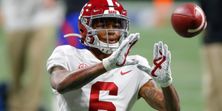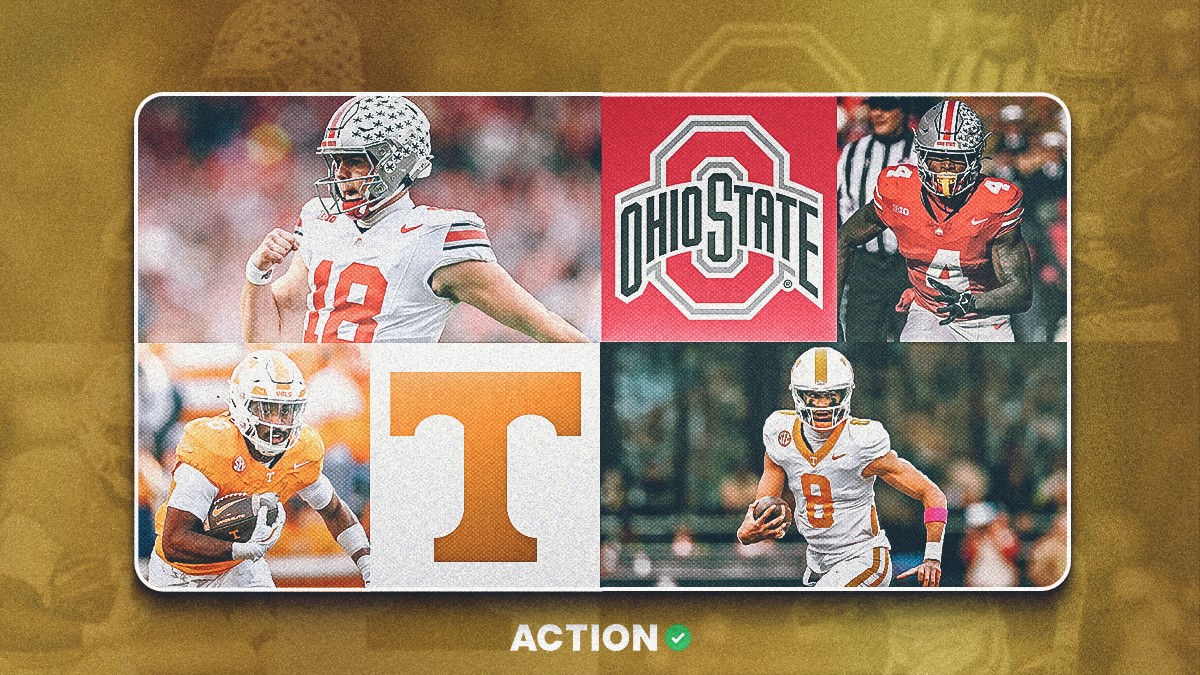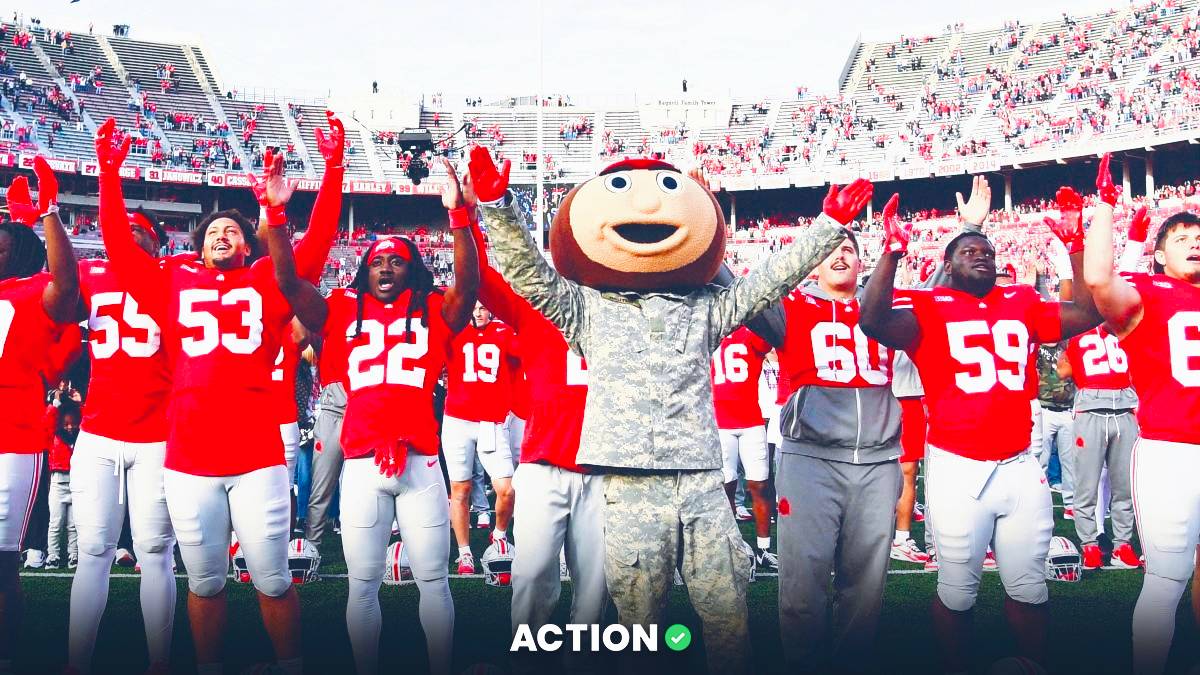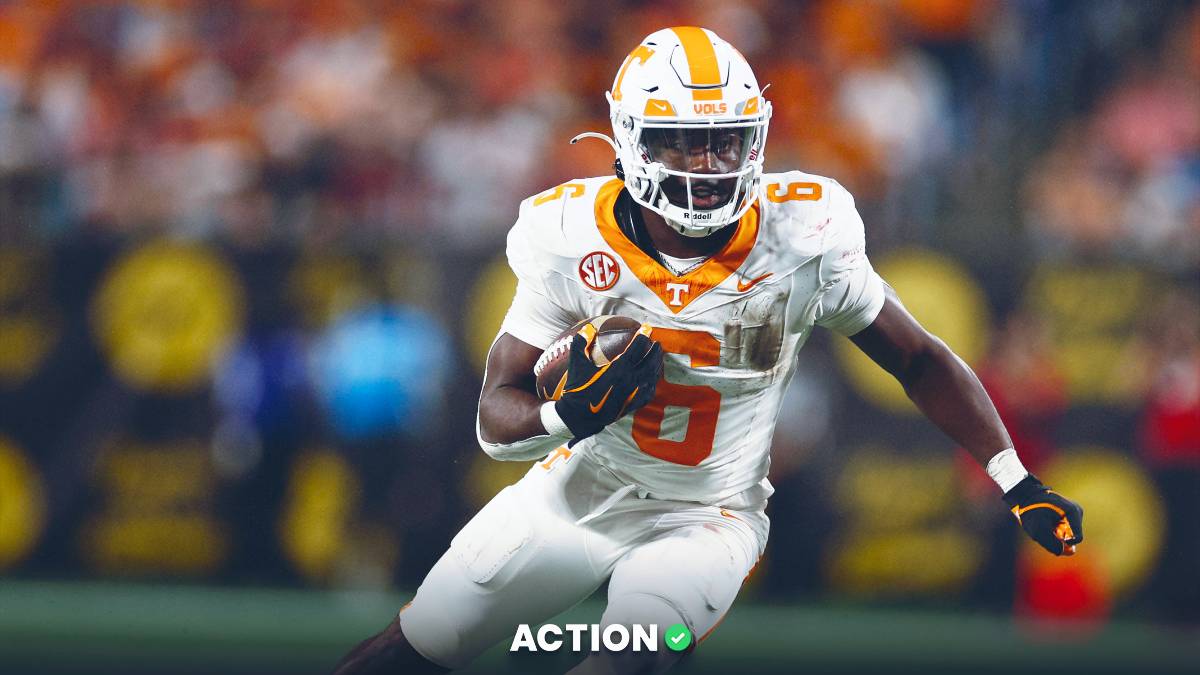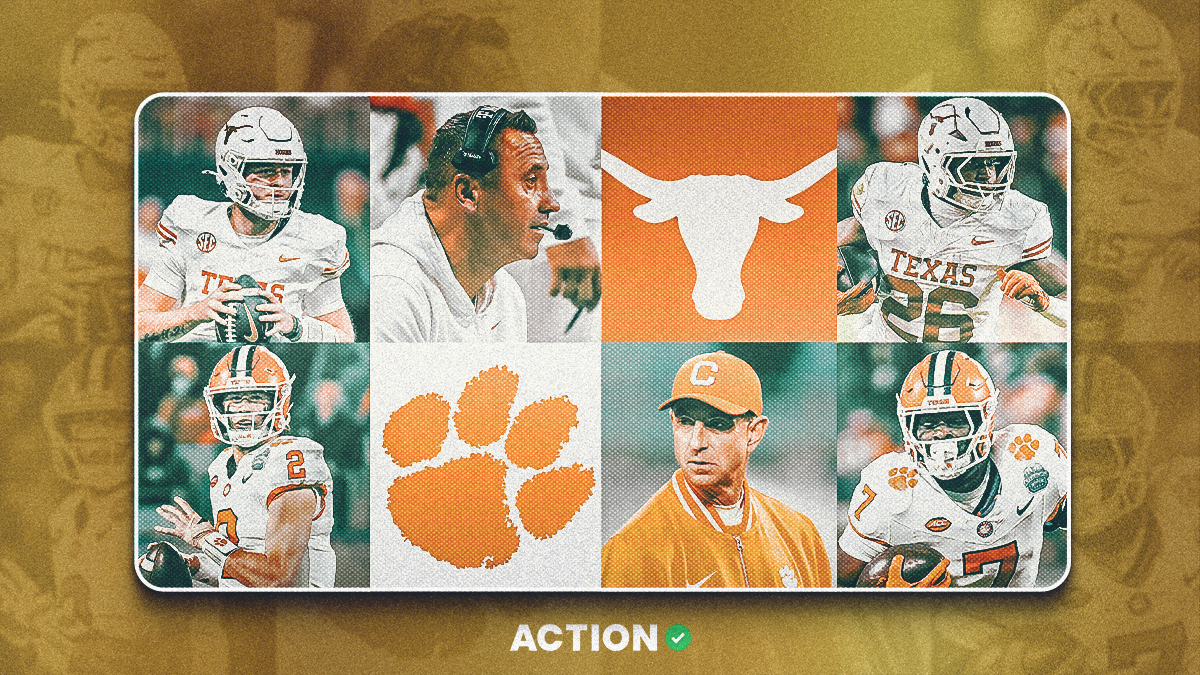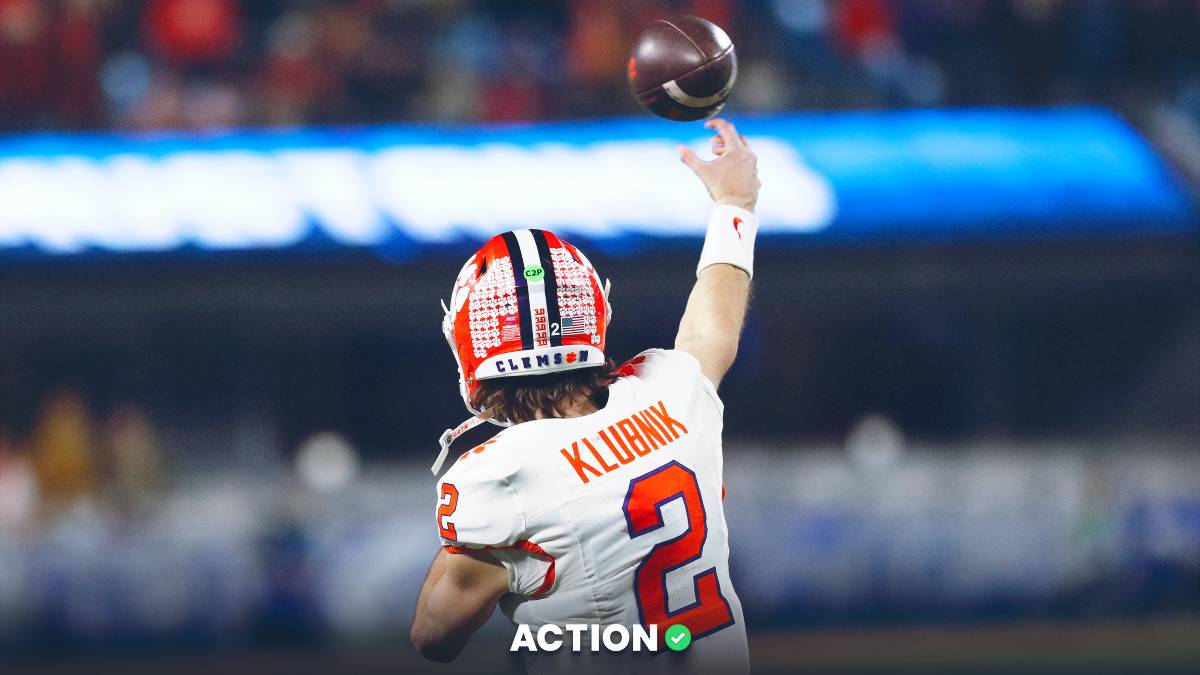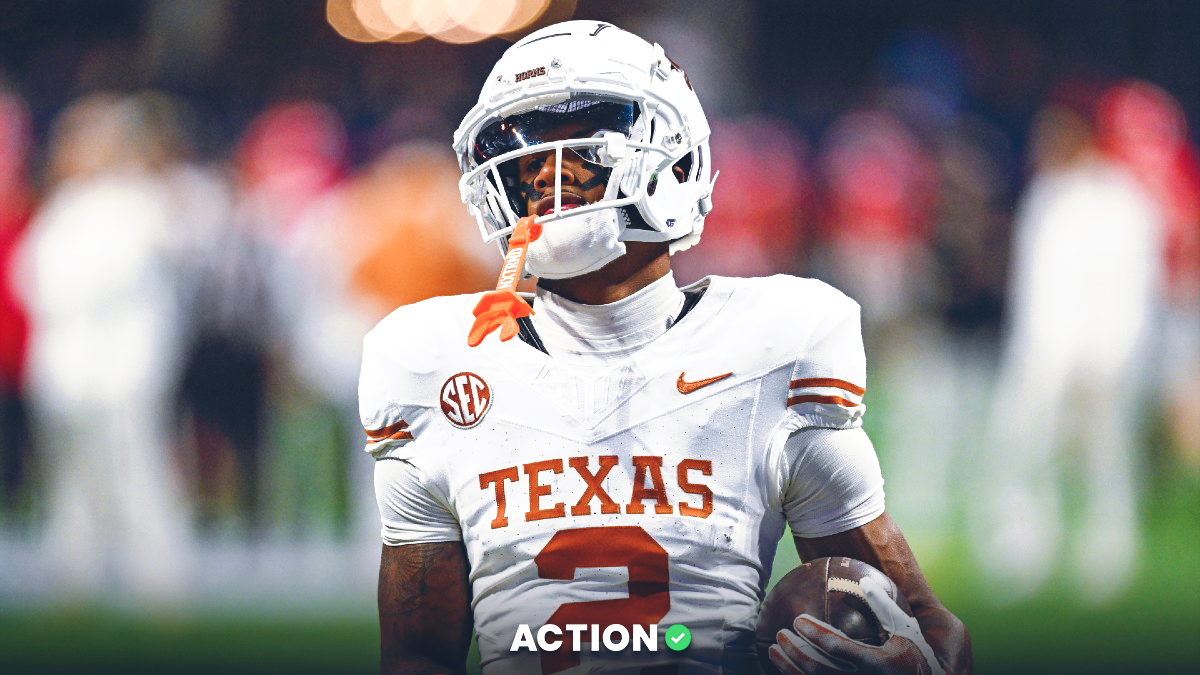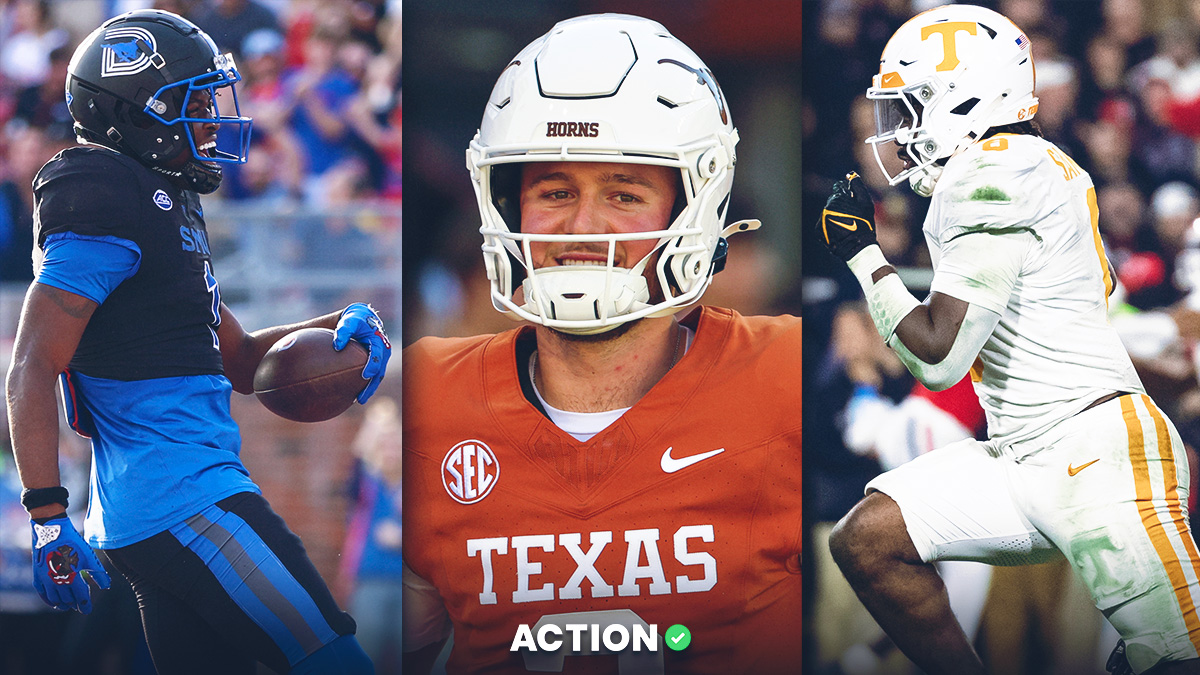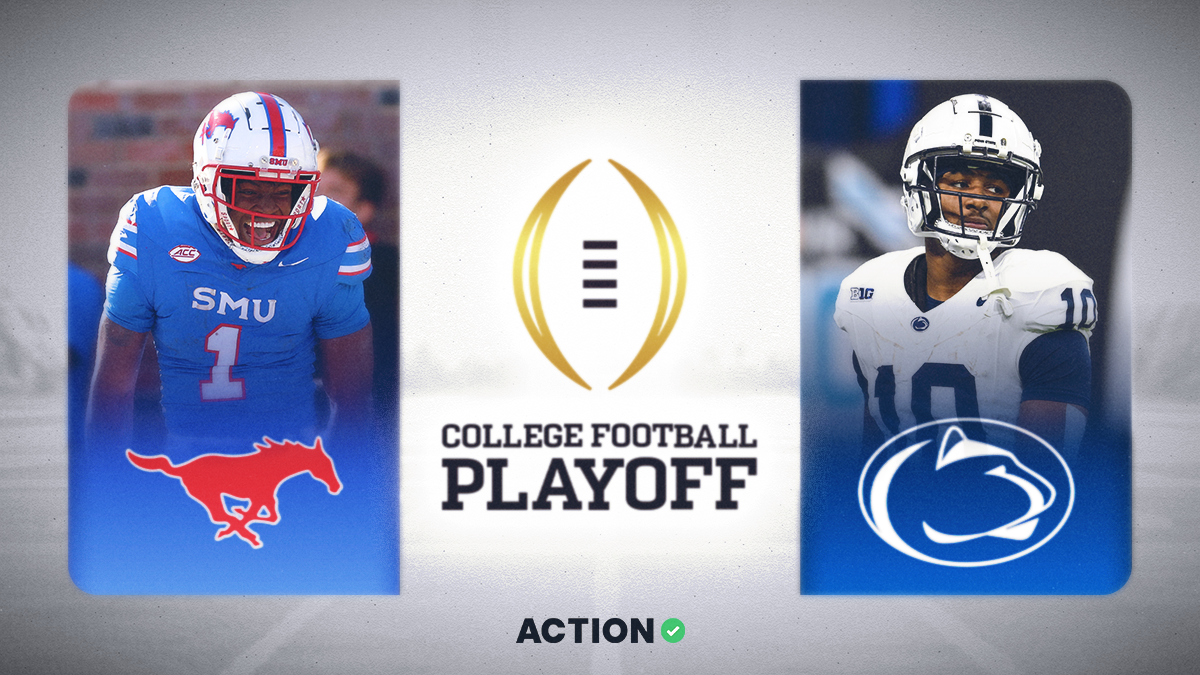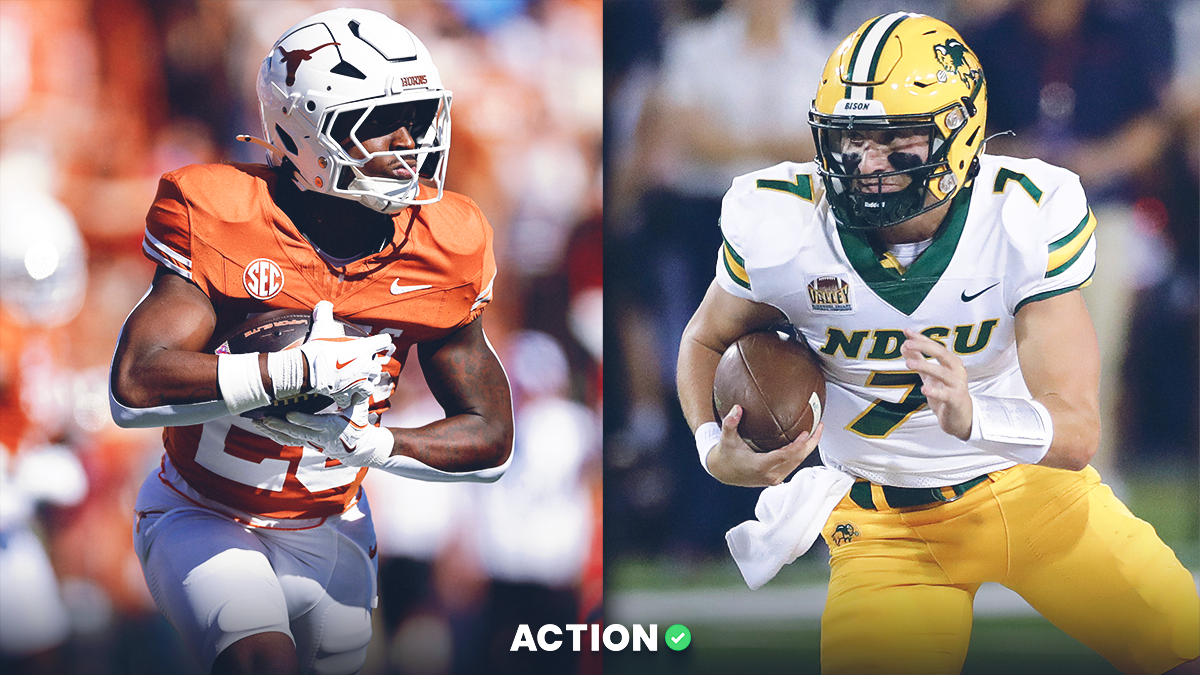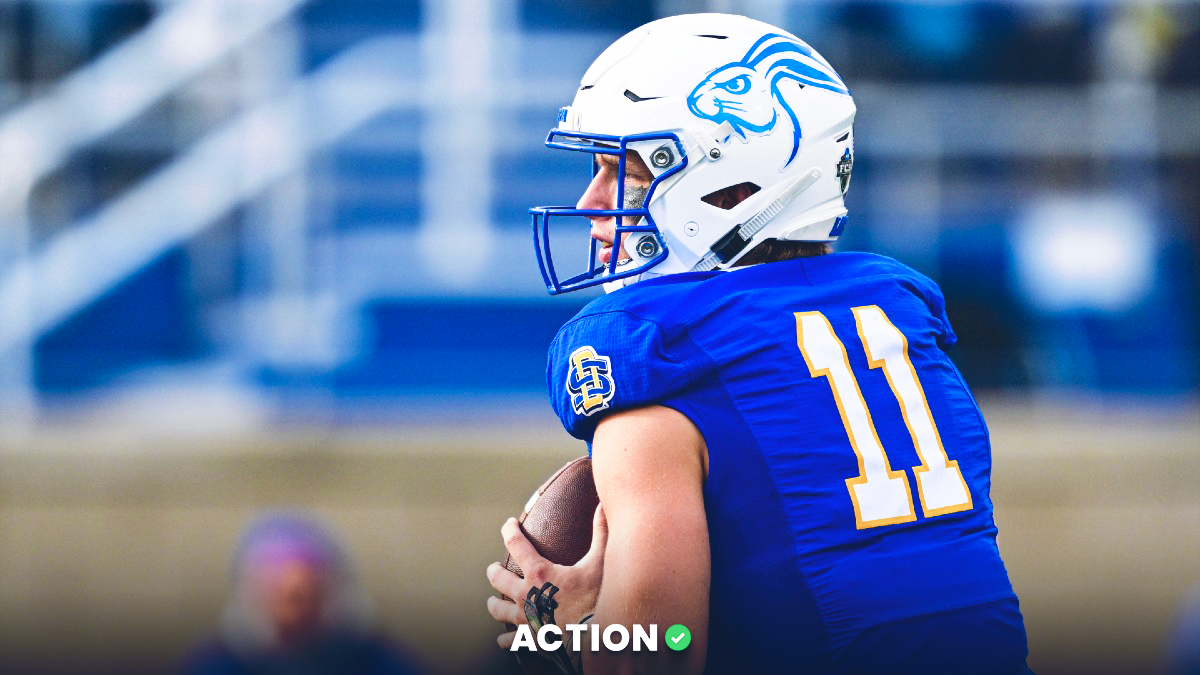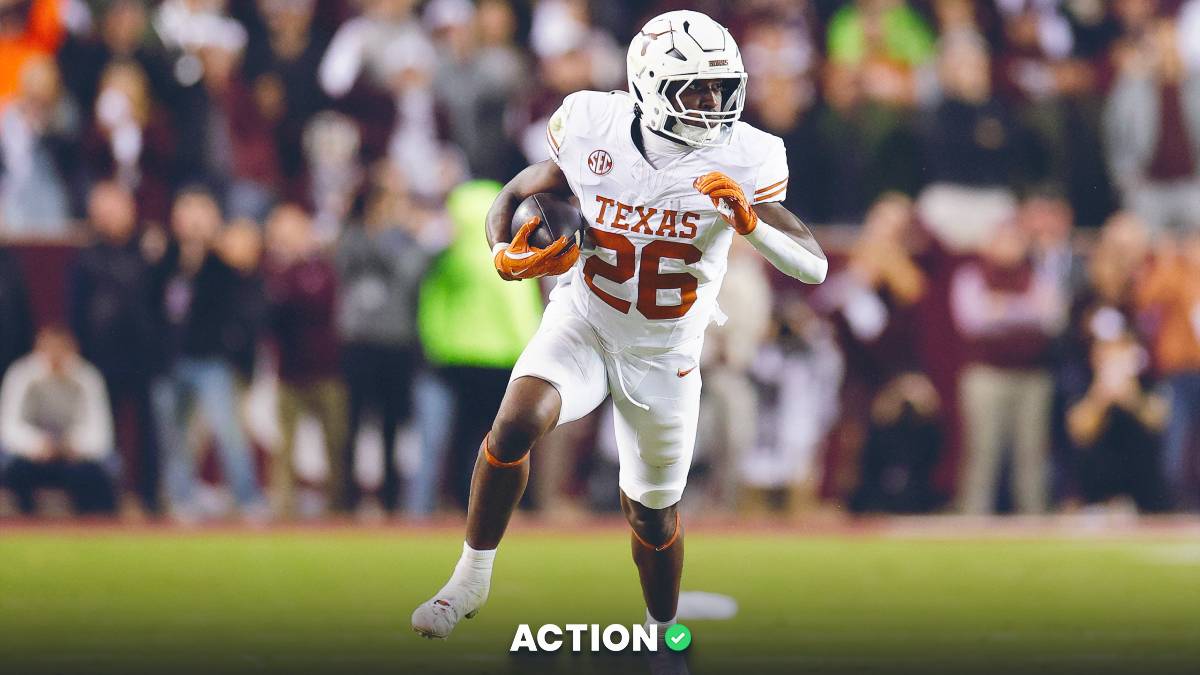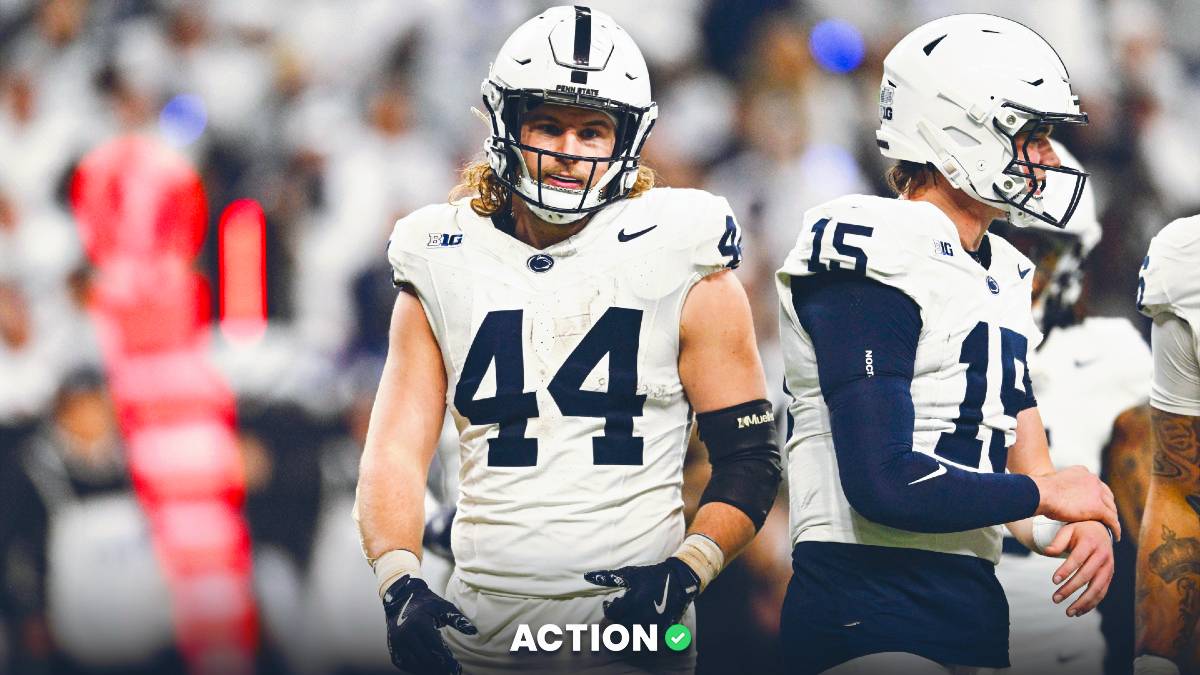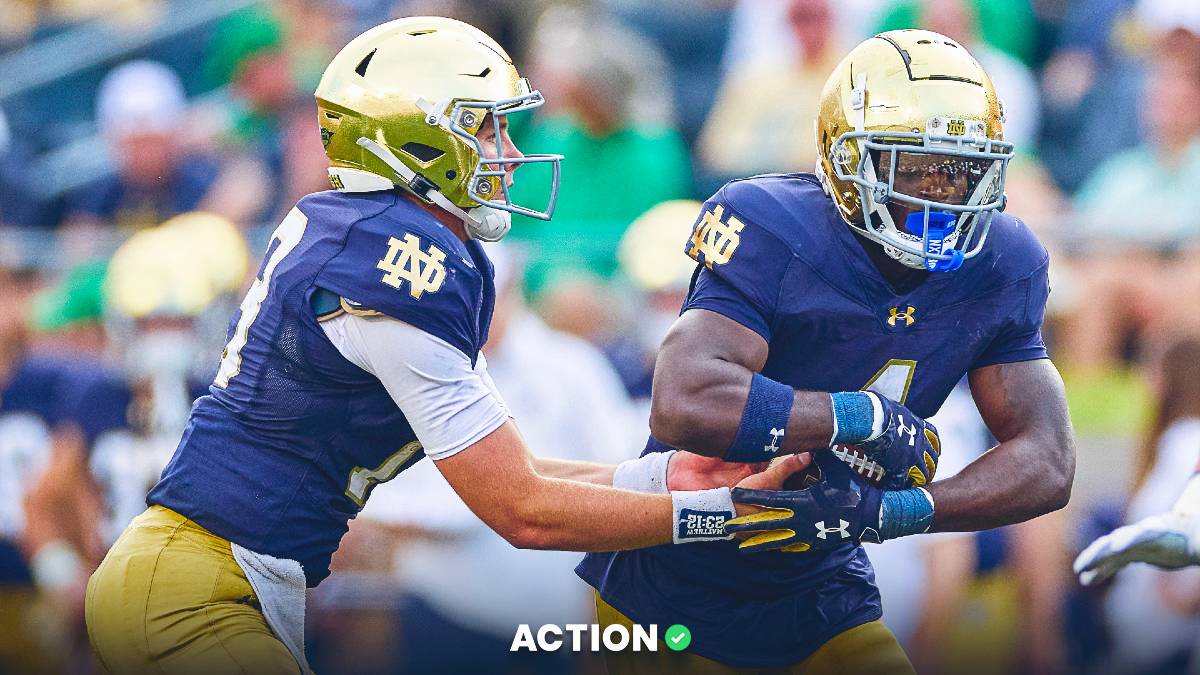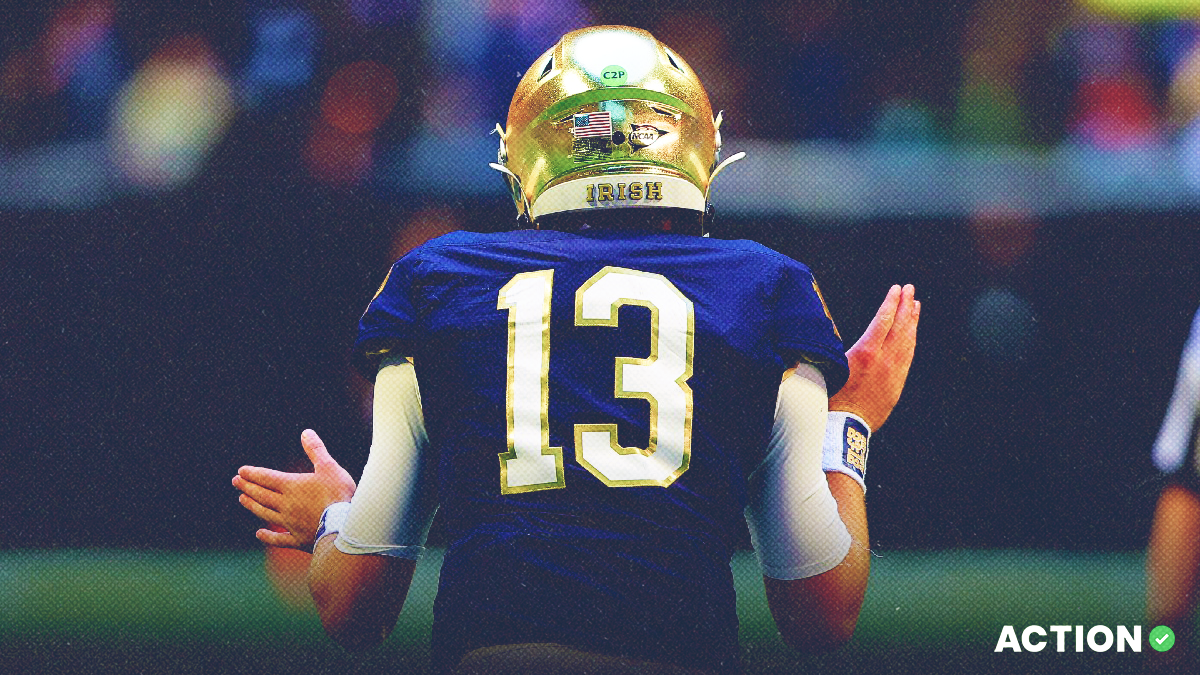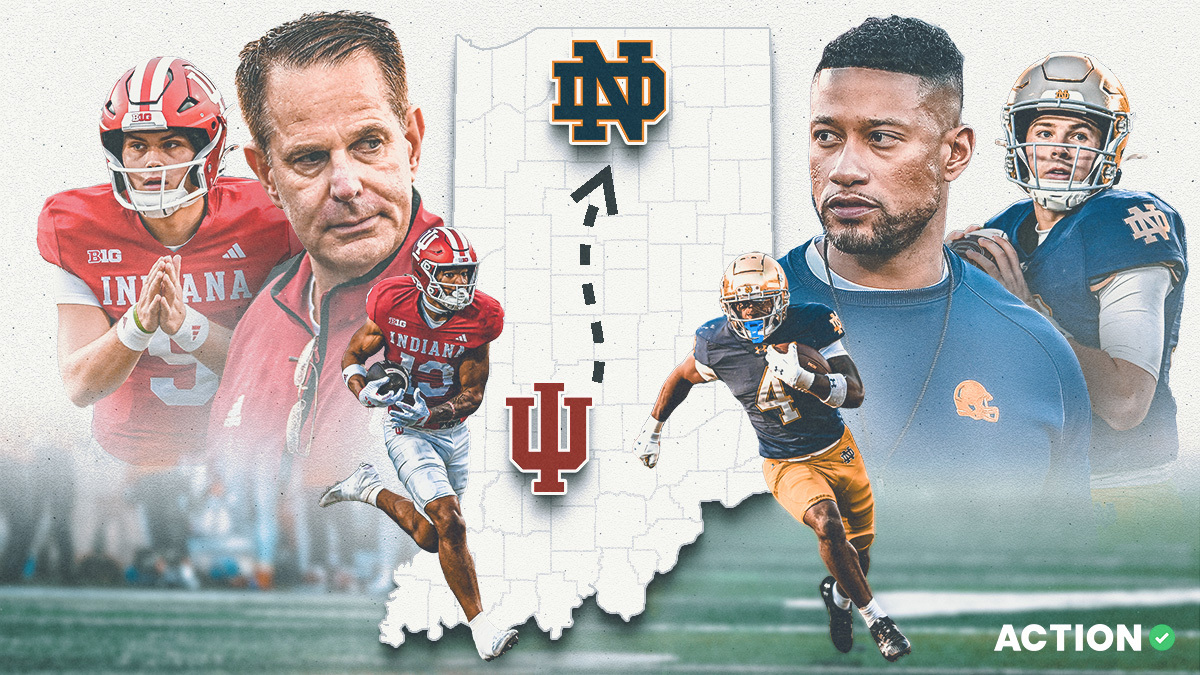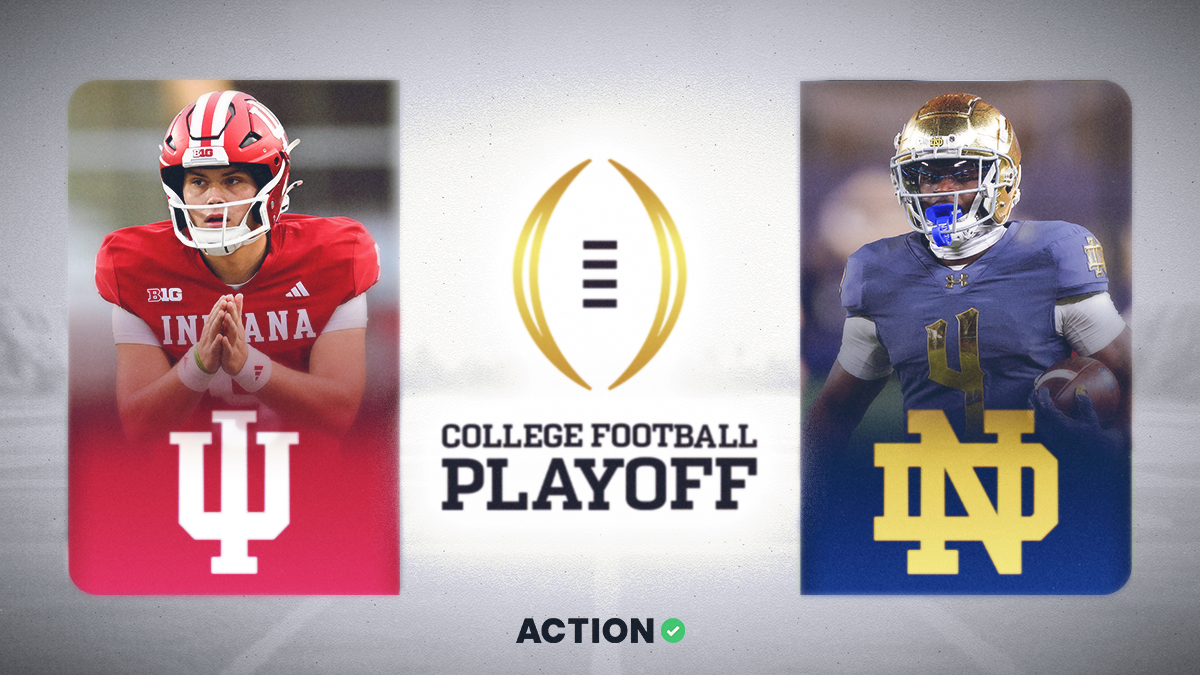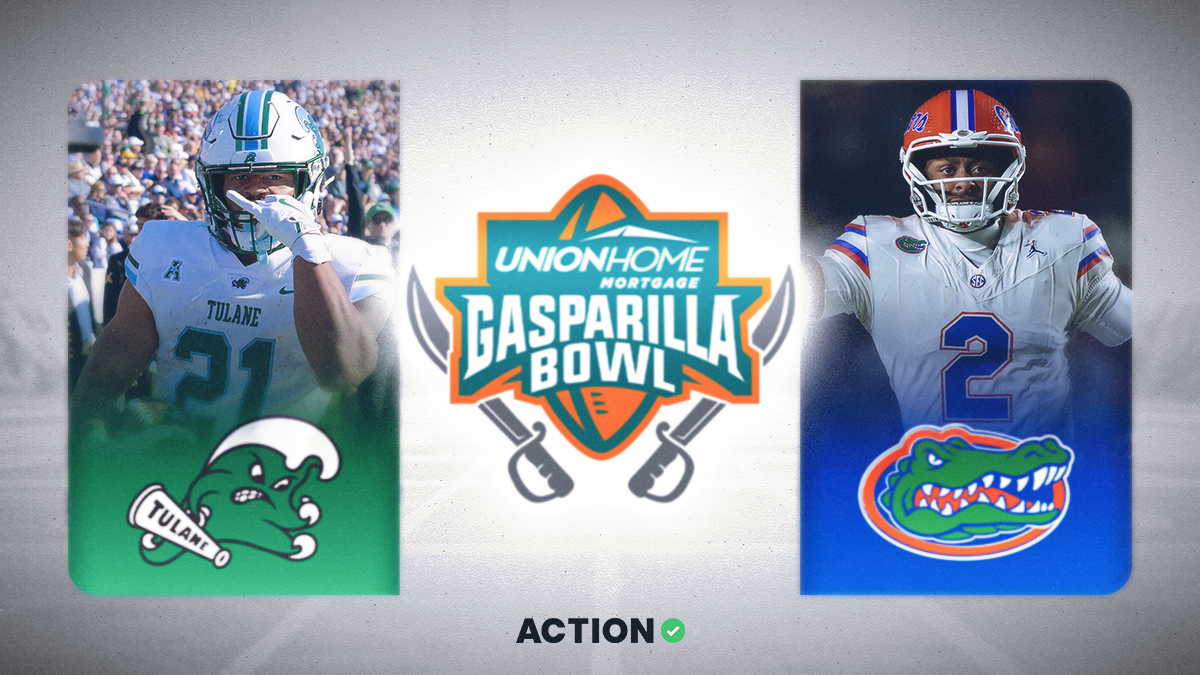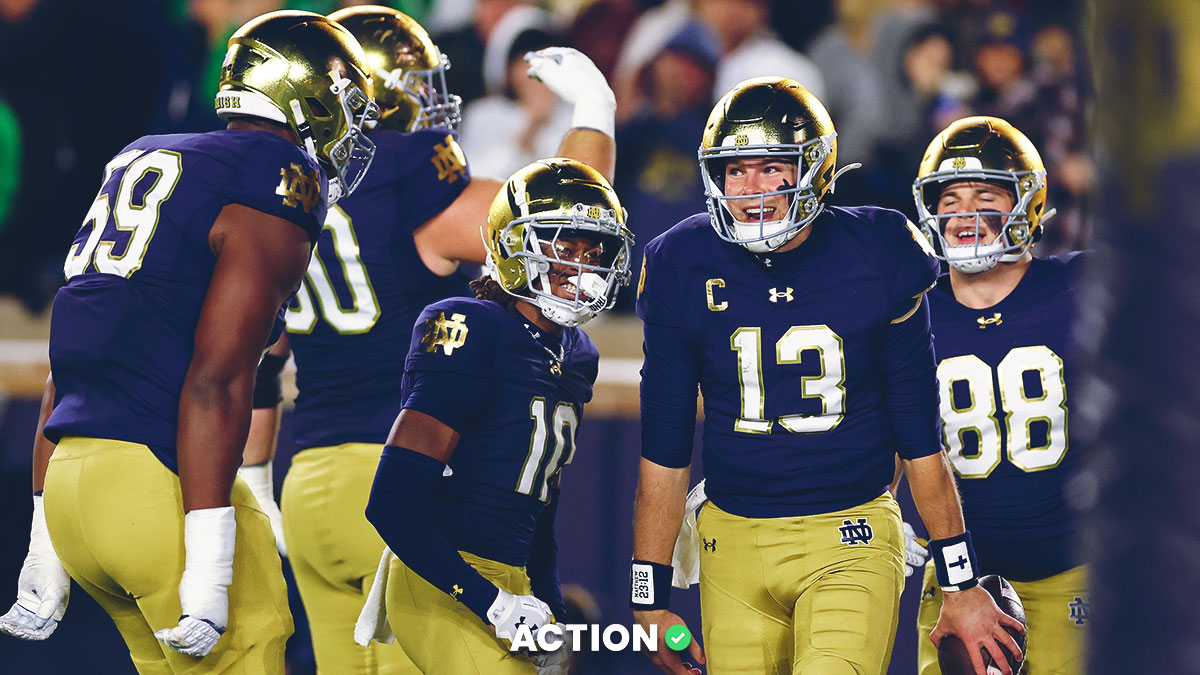Alabama (-9) vs. Ohio State (Over/Under: 75.5)
Kickoff: 8 p.m. ET on Monday, Jan. 11, 2021
Location: Hard Rock Stadium, Miami
TV: ESPN
The NFL regular season is over, and there's just one college football game left, which means it's time to start thinking about the 2021 NFL Draft.
Here's a first look at seven prospects playing in the College Football Playoff National Championship.
For each prospect, I provide a preliminary player comparison based on college production, physical profile, age, recruitment status and expected draft range.
Quarterbacks
Justin Fields, Ohio State
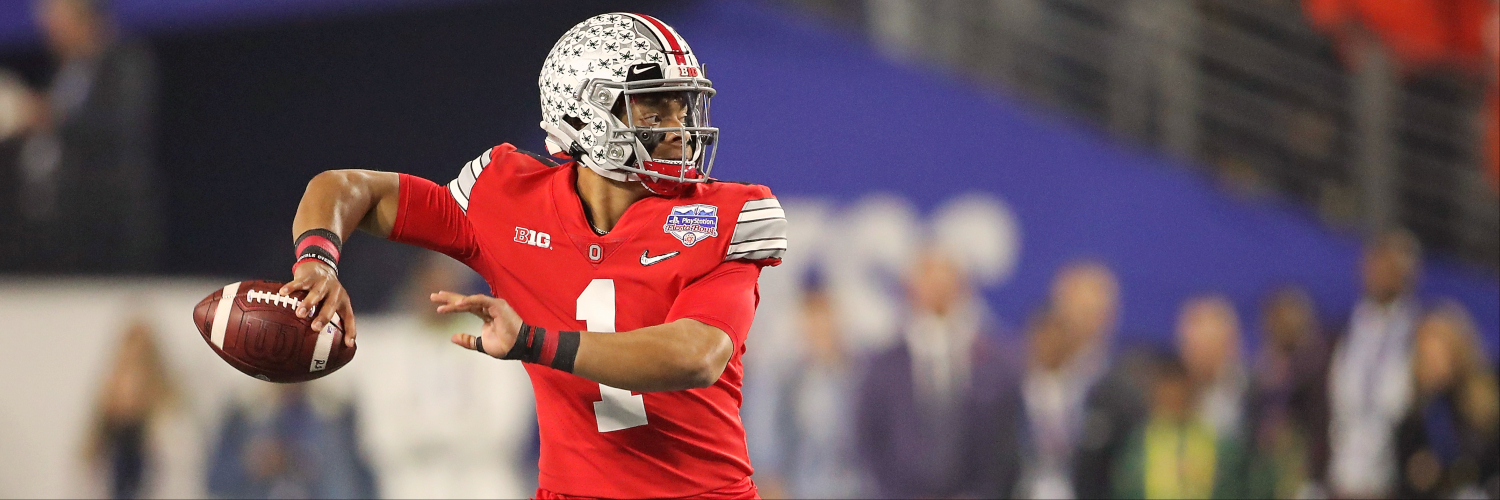
- Height: 6’3” | Weight: 228 pounds
- 2021 Age: 22 | Class: Junior
- Recruitment Stars: 5
- Proj. Draft Round: 1
As highlighted in my prop piece on Clemson quarterback Trevor Lawrence, Fields has gotten some hype as the potential No. 1 quarterback in this draft class.
As of writing, he trails only Lawrence in his odds to be the top pick in the draft.
- DraftKings: +700
- PointsBet: +750
- BetMGM: +800
- FanDuel: +1000
Fields has had something of a circuitous path. As a recruit, he committed first to Penn State before ultimately enrolling at Georgia. After backing up Jake Fromm as a freshman, Fields left Georgia and transferred to Ohio State, where he has found a football home.
Because of extenuating circumstances, Fields was granted a waiver for immediate eligibility at Ohio State, so instead of redshirting for a year upon his transfer, he competed for and won the starting job as a sophomore.
And Fields' first year for the Buckeyes was truly impressive as he completed 67.2% of his passes for 3,273 yards and 41 touchdowns to just three interceptions in 14 games.
With his 11.2 adjusted yards per attempt (AY/A), he trailed only Joe Burrow (12.5) and Jalen Hurts (12.2) in the Power Five. Appropriately, he finished No. 3 behind them in 2019 Heisman Trophy voting.
This year, he hasn't been quite as prolific as a passer, but he has still been good: His 10.7 AY/A puts him in the top 10. He has struggled with six interceptions in just seven games — but with the exception of ball security, he has progressed as a passer. In 2020, his completion rate has jumped from 67.2% to 73.4%, and his yards per attempt has climbed from 9.2 to 9.9.
And none of this takes into account his running ability. As a recruit, Fields was the No. 1 dual-threat quarterback in his class, and we've seen his rushing talent in college.
Last year, he was 72-688-10 rushing for 6.0 yards per carry in 14 games (not counting sacks, per Pro Football Focus). This year in seven games, he is 27-445-5 for 7.8 yards per carry.
As a recruit, Fields led all quarterbacks in his class with an über-elite 4.51-second 40-yard dash at 221 pounds. He has the athleticism to be a top-tier quarterbacking runner in the NFL.
In the College Football Playoff semifinals last week, Fields impressed with 385-6-1 passing and 4-51-0 rushing despite playing through an injury. Before the game, he was generally thought of as a Round 1-ish player. Now, he's a near-lock to go in the top 10.
With a big game against Alabama, he can cement a pick in the top five. Fields is generally expected to declare for the 2021 draft.
NFL Prospect Comp:Jalen Hurts with more athleticism, recruitment status and draft capital but less experience and production.
Mac Jones, Alabama
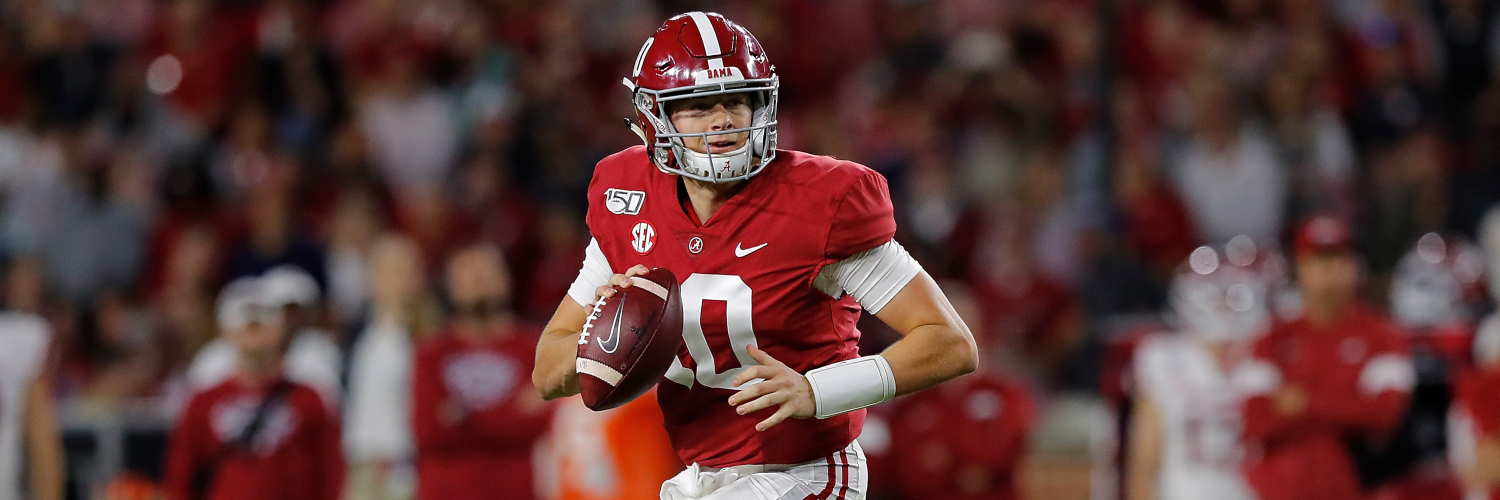
- Height: 6’3” | Weight: 214 pounds
- 2021 Age: 23 | Class: Redshirt Junior
- Recruitment Stars: 3-4
- Proj. Draft Round: 2-3
Jones is an intriguing prospect, although I doubt he will declare for the 2021 draft. He has a year of eligibility left, and with just one full season as a starter, he will likely return to college to gain more experience and build his résumé.
After redshirting in 2017 and backing up both Tua Tagovailoa and Jalen Hurts in 2018, Jones served as the No. 2 quarterback last year until Tagovailoa's hip injury thrust him into the full-time starting role.
In his four 2019 starts in relief of Tagovailoa, Jones looked great throwing the ball.
- Arkansas: 18-of-22 passing, 235 yards, three touchdowns
- Western Carolina: 7-of-11 passing, 275 yards, three touchdowns
- Auburn: 26-of-39 passing, 335 yards, four touchdowns, two interceptions
- Michigan: 16-of-25 passing, 327 yards, three touchdowns
And in 2020, Jones has been even better. He leads the Power Five with a 12.8 AY/A, and he has completed 77.0% of his passes for 4,036 yards and 36 touchdowns to four interceptions in 12 games.
An easy All-American selection, Jones finished No. 3 in 2020 Heisman voting — and he might have won if he hadn't had to split votes with two teammates in wide receiver DeVonta Smith (No. 1) and running back Najee Harris (No. 5).
But there are a few issues with Jones.
First, he's a net negative as a runner. As a recruit, he ran a 4.91-second 40-yard dash at just 180 pounds. Yikes.
Second, he lacks above-average arm talent. Ball velocity isn't massively important, especially if a quarterback is cerebral and plays with great anticipation — but Jones' lack of arm strength will likely hold him back in the NFL.
Third, he has just one season as a starter, but he's also already a junior, so if he enters the NFL now, he will likely be too inexperienced. And if he enters the NFL in 2022, he will be 24 years old as a rookie. Either way, it's not great.
Jones has talent, but his limitations might relegate him to a career as a backup.
NFL Prospect Comp: A.J. McCarron with more draft capital but less experience.
Running Backs
Najee Harris, Alabama
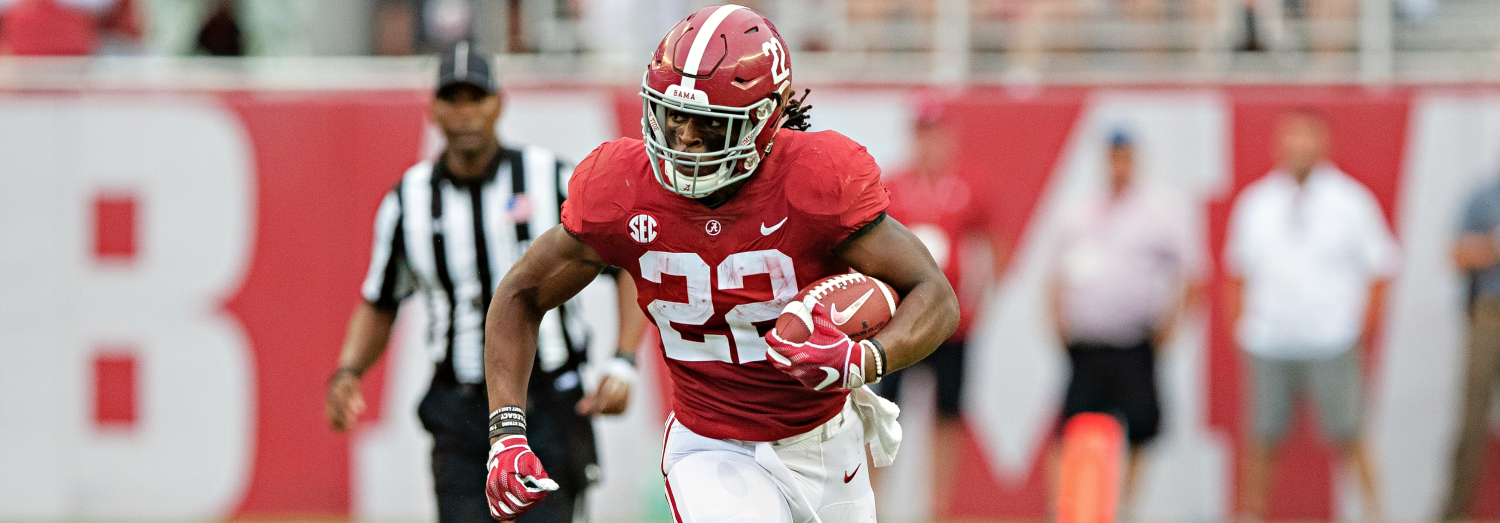
- Height: 6’2” | Weight: 230 pounds
- 2021 Age: 23 | Class: Senior
- Recruitment Stars: 5
- Proj. Draft Round: 1-2
In the NFL Draft and fantasy rookie drafts, Harris is likely to be the No. 2 back off the board behind Clemson running back Travis Etienne.
Ever since arriving at Alabama and recruiting "his guys," head coach Nick Saban has had an eye for backs destined to be top-100 picks in the NFL draft.
- Mark Ingram: 1.28 (2011)
- Trent Richardson: 1.03 (2012)
- Eddie Lacy: 2.61 (2013)
- T.J. Yeldon: 2.36 (2015)
- Derrick Henry: 2.45 (2016)
- Kenyan Drake: 3.73 (2016)
- Josh Jacobs: 1.24 (2019)
- Damien Harris: 3.87 (2019)
Mock Richardson and even Lacy if you want, but all of these former Alabama backs have had at least some degree of fantasy relevance in the NFL.
And now we have Najee Harris, who has lived up to the hype after entering college as one of the top recruits in the country.
After backing up Damien Harris and Bo Scarbrough as a freshman, Najee Harris as a sophomore split the backfield work with upperclassmen Damien Harris and Jacobs and looked pretty good doing it.
He did almost nothing as a receiver, but as a runner, he might have been the best of the 2018 trio.
- Damien Harris (15 games): 150-876-9 rushing | 22-204-0 receiving
- Josh Jacobs (15 games): 120-640-11 rushing | 20-247-3 receiving
- Najee Harris (15 games): 117-783-4 rushing | 4-7-0 receiving
And as a junior and senior, he has thrived in a post-Damien Harris/Jacobs backfield, breaking out as a true lead back.
- 2019 (13 games): 209-1,224-13 rushing | 27-304-7 receiving
- 2020 (12 games): 229-1,387-24 rushing | 36-346-3 receiving
I wish Harris had entered the draft last year when he was first eligible, because he truly had nothing left to prove in college, and in dynasty value, there's a big difference between a rookie back who is 22 years old and one who is 23 — but that's a small complaint.
Harris is a future NFL lead back.
NFL Prospect Comp: Leonard Fournette with less size, speed and draft capital but also more agility and better vision and receiving skills.
Trey Sermon, Ohio State
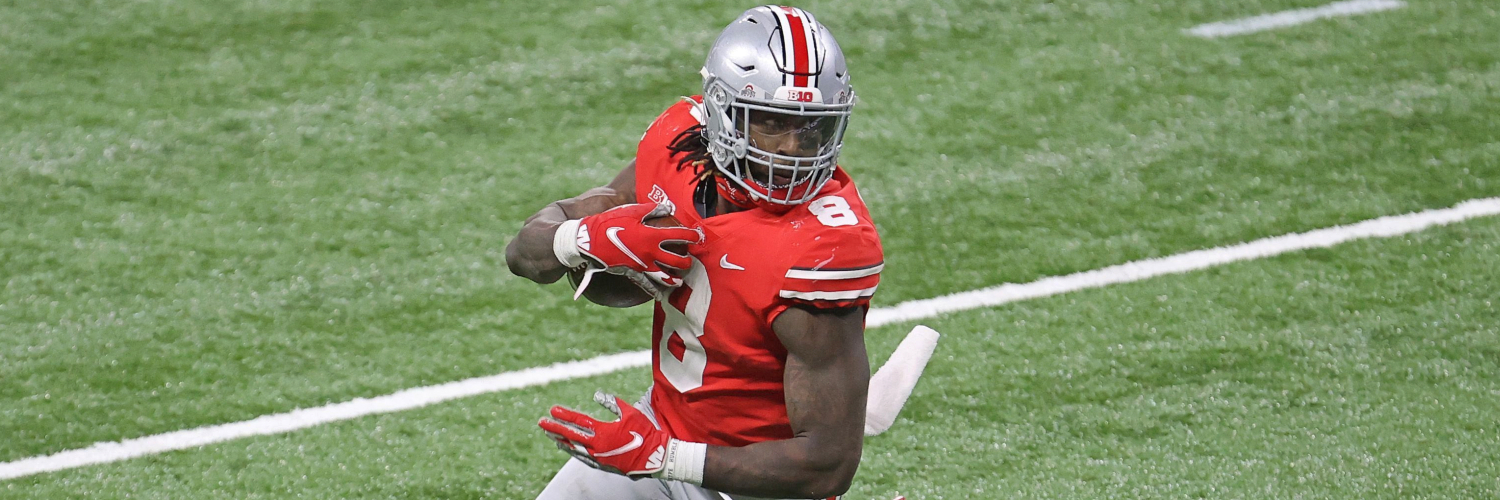
- Height: 6’1” | Weight: 215 pounds
- 2021 Age: 22 | Class: Senior/Graduate
- Recruitment Stars: 4
- Proj. Draft Round: 3-4
A graduate transfer from Oklahoma, Sermon has had an up-and-down college career.
As a true freshman in 2017, Sermon was a strong change-of-pace option to No. 1 back Rodney Anderson with 121-744-5 rushing and 16-139-2 receiving.
And then as a sophomore, he led the backfield with 1,128 yards and 13 touchdowns from scrimmage — but at times he was markedly outplayed by No. 2 back Kennedy Brooks (1,113 yards, 12 touchdowns), and then the following year, he lost his starting role after the first five games and had to split work as the No. 2 back before suffering a season-ending knee injury in November.
As a result, he had just 456 yards and five touchdowns from scrimmage in 10 games as a junior.
With potentially multiple backs ahead of him on the depth chart, Sermon transferred to Ohio State for his final year, and he has bounced back in a big way with the Buckeyes.
In seven games, Sermon is 115-868-4 rushing and 12-95-0 receiving, and he has looked every bit as good as those numbers. He has improved as a receiver since his days with the Sooners, and as a runner, he has displayed a rare combination of physicality and finesse.
Sermon lacks notable speed, so he's not likely to impress in his pre-draft workouts, which could cause him to go in the middle rounds. But as a prospect, he likely has the floor of a committee contributor and the ceiling of a multi-year starter.
NFL Prospect Comp: Chris Carson but younger and with more draft capital.
Wide Receivers
DeVonta Smith, Alabama
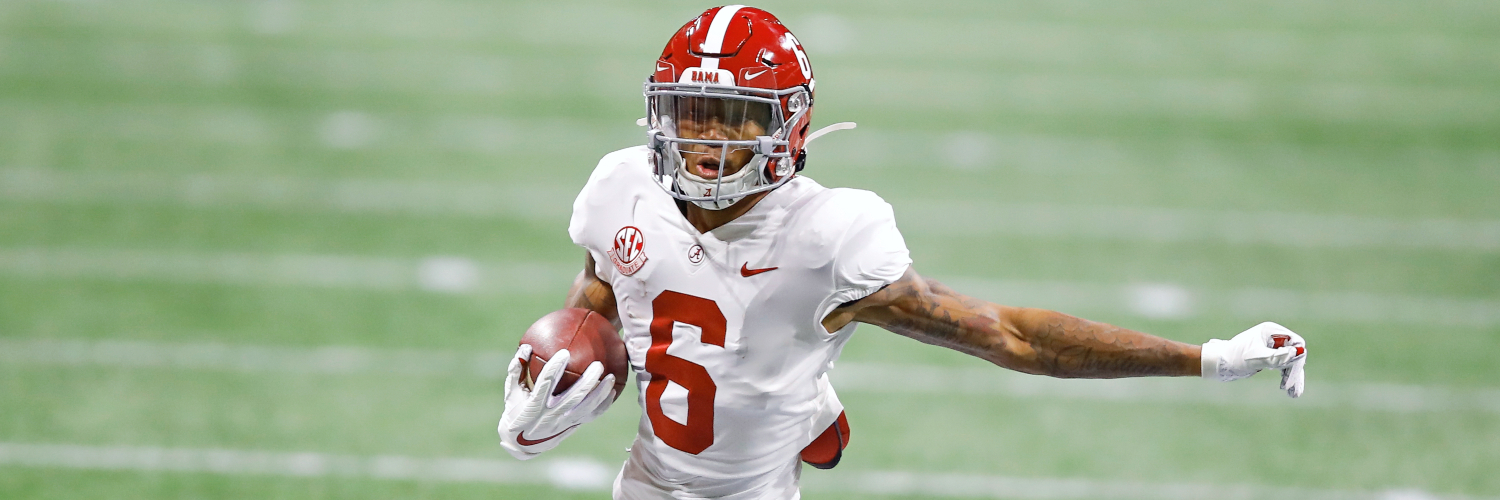
- Height: 6’1” | Weight: 175 pounds
- 2021 Age: 23 | Class: Senior
- Recruitment Stars: 3-4
- Proj. Draft Round: 1
A consensus All-American and the winner of the Heisman Trophy and Biletnikoff Award, the heralded Smith has dominated in 2020. He ranks No. 1 in the country with 105 receptions, 1,641 yards receiving and 20 touchdowns receiving in 12 games.
And it's not as if this production came out of nowhere.
Last year, despite playing with two 2020 first-round receivers in Jerry Jeudy and Henry Ruggs as well as potential 2021 first-rounder Jaylen Waddle, Smith led Alabama in receiving.
- DeVonta Smith (13 games): 68-1,256-14 receiving
- Jerry Jeudy (13 games): 77-1,163-10 receiving
- Henry Ruggs (12 games): 40-746-7 receiving
- Jaylen Waddle (13 games): 33-560-6 receiving
For two years, he has arguably been the No. 1 receiver on the best offense in college football.
But it's not quite that simple.
At wide receiver, when a guy breaks out — how old he is, what year he is — matters a lot for his NFL projection. All else equal, a player who breaks out as an 18-year-old freshman is much likelier to have NFL success than one who emerges as a 21-year-old junior or senior.
And so it's problematic for Smith that in 2018 he was the No. 4 wide receiver after Jeudy, Ruggs and Waddle.
- Jerry Jeudy (19-year-old sophomore): 68-1,315-14 receiving
- Henry Ruggs (19-year-old sophomore): 46-741-11 receiving
- Jaylen Waddle (20-year-old freshman): 45-848-7 receiving
- DeVonta Smith (20-year-old sophomore): 42-693-6 receiving
In 2017, Waddle wasn't on the team, and No. 1 receiver Calvin Ridley relegated Jeudy, Ruggs and Smith to a forgotten rotational committee as freshmen, but the following year — with Ridley gone to the NFL — Smith had the opportunity to emerge within the offense, and everyone outplayed him even though they were either younger or had fewer years in college.
That's not good. In fact, that's bad. That's a massive crimson-colored flag.
And it's also not good that he's entering the league as a senior, that he will be 23 years old as a rookie and that he is just 175 pounds, especially since he's not known as a speedster.
Those are all flags.
Despite all the accolades he has earned and all the production he has amassed at an elite football school, Smith is a highly problematic prospect based on numbers that have proven predictiveness.
But Smith has two large factors in his favor.
- He will be drafted in Round 1, maybe in the top 10.
- He is, you know, good at football.
With the hype Smith has, he might be the first non-quarterback selected in the draft, and many of the tape-grinding aficionados I respect love him because he is a good route runner who plays all the receiver positions.
A versatile and productive receiver selected with a premium pick — that sounds like a guy who will have NFL success.
Every year, there are a few prospects who drastically divide talent evaluators, and usually (though not always) the lines fall along the film watcher-vs.-numbers cruncher divide.
I think Smith will be one of those divisive prospects this year.
I haven't decided yet which side I'm on.
NFL Prospect Comp: Brandon Lloyd with far more draft capital but also older … or maybe Marvin Harrison with more youth but less production and route-running nuance.
Jaylen Waddle, Alabama
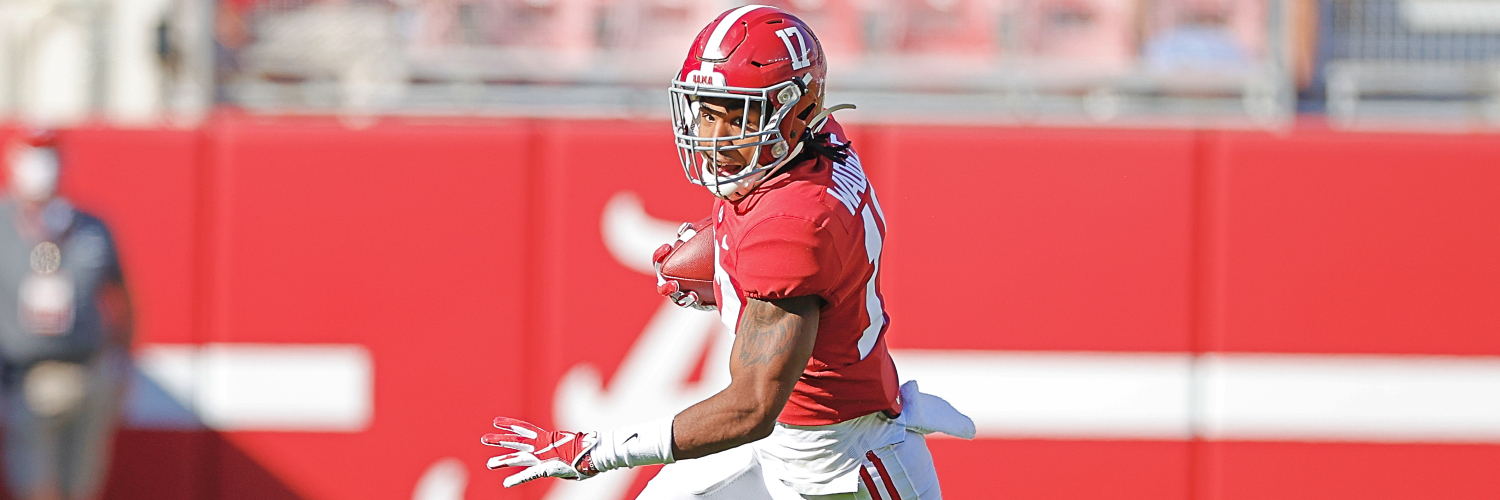
- Height: 5’10” | Weight: 182 pounds
- 2021 Age: 23 | Class: Junior
- Recruitment Stars: 4
- Proj. Draft Round: 1-2
Waddle (ankle) has missed most of the season with an injury, but he is tentatively expected to return for the National Championship.
Because he has one year of eligibility left and is yet to have a true breakout season, Waddle might choose to return to Alabama for his senior season — but I'm skeptical. Like Ruggs last year, Waddle already has the hype if not the production to warrant an early declaration for the draft.
And it's not as if Waddle is some production-less sprinter. Before his injury, he — and not the Heisman-winning Smith — was the playmaking No. 1 receiver on the team.
- Jaylen Waddle (Weeks 1-4): 25-557-4 receiving | 3-12-0 rushing
- DeVonta Smith (Weeks 1-4): 38-483-4 receiving | 2-2-1 rushing
That's not to say that Smith wouldn't have eventually overtaken Waddle. After all, he had significantly more receptions than Waddle in Weeks 1-4, and last year he played well ahead of Waddle in the wide receiver rotation.
And Waddle is old. Like, ah-huh-uld.
Remember how old Clemson wide receiver Hunter Renfrow seemed when he entered the NFL as a redshirt senior after five years in college?
Waddle is approaching Renfrow territory. He will turn 23 years old in the 2021 season — but he has been in college just three years.
He was a 20-year-old true freshman, which according to my back-of-the-envelope math means that as a fifth-grader he had a moustache.
I'm sure it wasn't a thick-and-luscious Ron Swanson beauty, but still, a moustache.
Like Smith, Waddle is likely to be a divisive prospect this draft season.
On the one hand, he's best friends with Methuselah's uncle, and he's never been the real No. 1 receiver on his team. On the other hand, he's an athletic four-star recruit who was on his way to a highly productive season, and he will still enter the league as an early declarant, which is strongly correlated with NFL success.
Unless he underwhelms in his pre-draft workouts, Waddle is likely to be a top-50 pick. And if he balls out in his workouts, he could go in the top half of Round 1.
NFL Prospect Comp: Henry Ruggs with better route-running skills but much older and notably slower.
Chris Olave, Ohio State

- Height: 6’1” | Weight: 188 pounds
- 2021 Age: 21 | Class: Junior
- Recruitment Stars: 3
- Proj. Draft Round: 2-3
Olave has some knocks against him.
He's a smooth route runner thanks to his work with Ohio State wide receivers' coach Brian Hartline. He can create separation at the line of scrimmage with his releases. He lines up all over the field.
All of that is good — but it also means he might already be maxed out as a talent.
For as good of a football player as he is, Olave was a three-star recruit because of his mediocre athleticism. At 160 pounds in high school, he ran a 4.73-second 40-yard dash … and he has put on 28 pounds since then. Even with excellent training, he probably still won't display position-average speed in his pre-draft workouts.
And do I really want to be excited about a receiver who weighs less than 190 pounds and probably runs slower than a 4.50-second 40?
Not really.
But there are reasons to like him. After a nondescript freshman season as a depth receiver and special teamer, Olave broke out as a 19-year-old sophomore with a team-best 48-840-12 receiving in 13 games.
And then this year, he has without question been one of the best players in the nation with 42-660-7 receiving in six games. Granted, it's a COVID-truncated sample, but in every game this season, Olave has either 100 yards or two touchdowns. He has been nothing short of dominant.
With his physical limitations, I doubt Olave will go in Round 1, but maybe he will flash unexpected athleticism at the combine and catapult himself into Day 1. More realistically, though, Olave will be selected in Rounds 2-3.
NFL Prospect Comp: CeeDee Lamb but slower, less productive and less invested with draft capital … so basically Tyler Boyd?
Matthew Freedman is 966-750-36 (+101.2 units) overall betting on the NFL. You can follow him in our free app.
Last year, he went 124-88-1 (+26.2 units) on the NFL draft.
The Editor-in-Chief of FantasyLabs, Freedman is commonly called the Oracle & the Labyrinthian.



